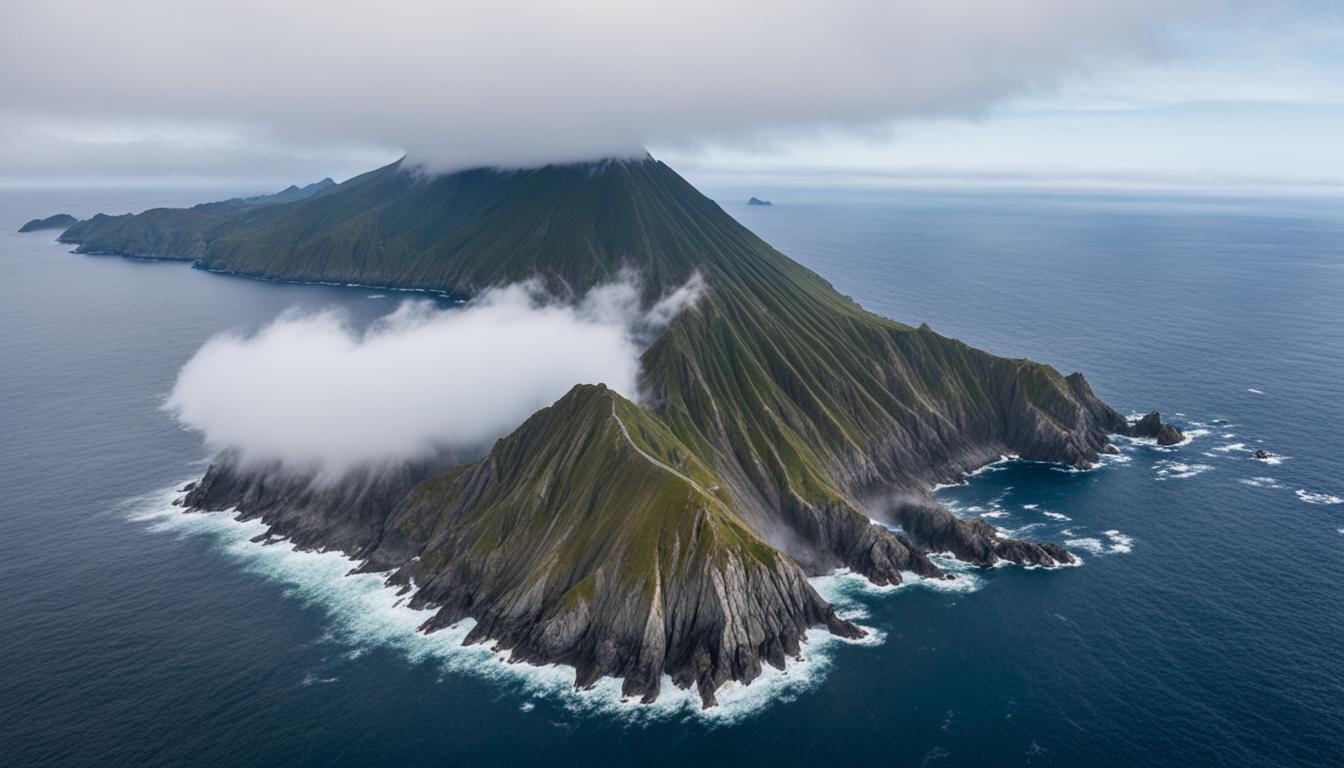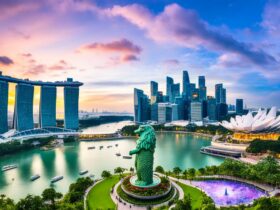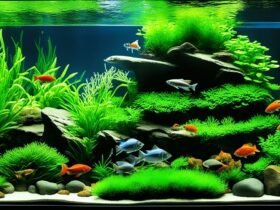Japan, known for its rich history and diverse geography, has recently made an exciting discovery in its island count. With advanced mapping technology and meticulous aerial photo comparisons, experts have identified previously uncounted islands and recognized volcanic activity that has given rise to new islands. As a result, Japan’s island count is expected to more than double from the current 6,852 to an astounding 14,125 islands!
One of the standout islands in this incredible archipelago is Hokkaido, the northernmost island of Japan. Situated alongside three other large islands (Honshu, Shikoku, and Kyushu), Hokkaido offers a unique blend of natural beauty, cultural heritage, and captivating experiences. Let’s explore more about this remarkable island and its significance in Japanese geography.
Key Takeaways:
- Hokkaido is the northernmost island of Japan, forming one of the four main islands.
- Japan’s island count is expected to increase to 14,125 islands, double its current count, due to recent discoveries.
- Advanced mapping technology and aerial photo comparisons have helped identify previously uncounted islands and new volcanic formations.
- Hokkaido offers breathtaking landscapes, six national parks, and a distinct culture compared to other regions of Japan.
- Understanding Japan’s island geography allows for a deeper appreciation of its natural beauty and cultural heritage.
Exploring the Northernmost Island of Japan
The northernmost island of Japan is called Hokkaido. It is one of the four large islands that make up the country, alongside Honshu, Shikoku, and Kyushu. Hokkaido is known for its stunning landscapes, including six national parks.
As the northernmost point of Japan, it offers unique experiences and a distinct culture compared to other regions. The island’s geography is diverse, featuring mountains, lakes, and coastlines. Travelers can explore its natural beauty, enjoy outdoor activities, and immerse themselves in the rich history and traditions of the northern Japan region.
“Hokkaido is a captivating destination that showcases the beautiful harmony between nature and culture. From the snowy landscapes of the winter season to the vibrant fields of lavender in the summer, visitors have the opportunity to witness the stunning transformations of the island throughout the year.” – Local Tour Guide
Understanding Japan’s Island Geography
Japan is an archipelago consisting of thousands of islands, each contributing to the country’s diverse geography. While the recent discovery of new islands has expanded the official count, it is important to note that some of these islands may be relatively small or located within lakes and rivers. However, the four main islands of Honshu, Hokkaido, Shikoku, and Kyushu form the core of Japan’s territory, and they are vital to the cultural, historical, and economic landscape of the country.
Honshu:
Honshu is the largest and most populous island in Japan. It is home to major cities such as Tokyo, Yokohama, and Osaka. The island’s diverse landscape includes mountains, valleys, and plains, offering a contrast between urban and rural areas. Honshu is known for its rich cultural heritage, including historical landmarks like Kyoto’s temples and Hiroshima’s Peace Memorial Park.
Hokkaido:
As previously mentioned, Hokkaido is the northernmost island in Japan. It boasts beautiful natural landscapes, including national parks such as Daisetsuzan and Shiretoko. Hokkaido is renowned for its picturesque mountains, hot springs, and unique wildlife, making it a popular destination for outdoor enthusiasts and nature lovers.
Shikoku:
Shikoku is the smallest of the four main islands but has its own distinct charm. It is famous for the 88 Temple Pilgrimage—a spiritual journey that takes visitors to various Buddhist temples. Shikoku’s rural landscapes, tranquil beaches, and laid-back atmosphere offer a peaceful escape from the bustling cities.
Kyushu:
Kyushu, located in the southwestern part of Japan, is known for its volcanic activity and natural hot springs. It is home to vibrant cities like Fukuoka and Nagasaki, as well as historical sites such as Kumamoto Castle and the ruins of Huis Ten Bosch. Kyushu’s unique blend of modernity and tradition makes it a captivating destination.
In addition to these main islands, Japan has numerous smaller islands, each with its own distinctive attractions. For example, Naoshima Island in the Seto Inland Sea is renowned for its contemporary art museums and installations, while Ōkunoshima Island, also known as Rabbit Island, is famous for its population of friendly wild rabbits.
Understanding Japan’s island geography provides valuable insight into the country’s natural wonders, cultural heritage, and regional diversity.

“The variety of islands in Japan offers a wealth of experiences for travelers. From the bustling metropolises on Honshu to the tranquil landscapes of Hokkaido, there is something for everyone to explore and enjoy.” – Traveler’s Guide to Japan
The Northern Territories Issue
The Northern Territories, consisting of Habomai, Shikotan, Kunashiri, and Etorofu, are a group of islands off the northeast coast of Hokkaido. These islands are currently under Russian control, but Japan claims sovereignty over them. The issue of the Northern Territories has been a longstanding territorial dispute between Japan and Russia since the end of World War II. Japan considers the islands to be an inherent territory that is illegally occupied by Russia. The Japanese government has persistently called for the return of the islands and the resolution of the dispute through negotiations for a peace treaty.
Conclusion
The recent discovery of thousands of new islands in Japan has revealed the incredible complexity and diversity of the country’s geography. While the increase in the official count of islands is a remarkable finding, it does not alter Japan’s territorial boundaries. However, this discovery has shed light on the long-standing territorial dispute surrounding the Northern Territories and the nation’s commitment to resolving the issue through diplomatic negotiations with Russia.
An understanding of Japan’s island geography is essential to appreciate the significance of this discovery. The unique characteristics of Hokkaido, the northernmost island of Japan, offer a glimpse into the country’s rich natural beauty and cultural heritage. With its breathtaking landscapes, including mountains, lakes, and coastlines, Hokkaido provides a unparalleled destination for exploration and discovery.
Exploring the vast expanse of Japanese islands allows visitors to witness the country’s diverse and captivating landscapes firsthand. Moreover, it offers an opportunity to comprehend the historical and cultural importance of these islands, including the ongoing territorial dispute. Japan’s determination to reach a peaceful resolution exemplifies its commitment to protecting its sovereignty and finding diplomatic solutions for complex geopolitical challenges.
In conclusion, the recent island discovery in Japan provides a deeper understanding of the country’s geography, the ongoing territorial dispute concerning the Northern Territories, and the unique allure of its northernmost island, Hokkaido. As Japan continues to preserve its territorial integrity while engaging in diplomatic negotiations, it remains a captivating destination for travelers seeking to experience the wonders of Japanese islands.
FAQ
What is the northernmost island of Japan?
The northernmost island of Japan is Hokkaido.
Can you tell me more about Hokkaido?
Hokkaido is one of the four large islands that make up Japan. It is known for its stunning landscapes, including six national parks. As the northernmost point of Japan, it offers unique experiences and a distinct culture compared to other regions. The island’s geography is diverse, featuring mountains, lakes, and coastlines. Travelers can explore its natural beauty, enjoy outdoor activities, and immerse themselves in the rich history and traditions of the northern Japan region.
What is the geography of Japan like?
Japan is an archipelago consisting of thousands of islands. The four main islands, Honshu, Hokkaido, Shikoku, and Kyushu, form the core of Japan’s territory. These islands are home to the majority of the country’s population and hold significant cultural, historical, and economic importance. The smaller islands, such as Naoshima and Ōkunoshima, offer unique attractions and experiences, contributing to Japan’s diverse island geography.
What are the Northern Territories?
The Northern Territories are a group of islands off the northeast coast of Hokkaido. They consist of Habomai, Shikotan, Kunashiri, and Etorofu. Currently, these islands are under Russian control, but Japan claims sovereignty over them. The issue of the Northern Territories has been a longstanding territorial dispute between Japan and Russia since the end of World War II. Japan considers the islands to be an inherent territory that is illegally occupied by Russia. The Japanese government has persistently called for the return of the islands and the resolution of the dispute through negotiations for a peace treaty.
What is the significance of the recent island discovery in Japan?
The recent discovery of thousands of new islands in Japan highlights the complexity and diversity of the country’s geography. While the increase in the official count of islands is significant, it does not change the territorial boundaries of Japan. However, the discovery sheds light on the ongoing territorial dispute surrounding the Northern Territories and the desire of Japan to resolve the issue through negotiations with Russia. Understanding Japan’s island geography and the unique characteristics of its northernmost island, Hokkaido, allows for a deeper appreciation of the country’s natural beauty and cultural heritage.











